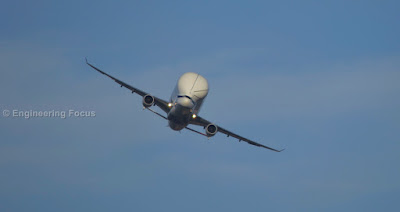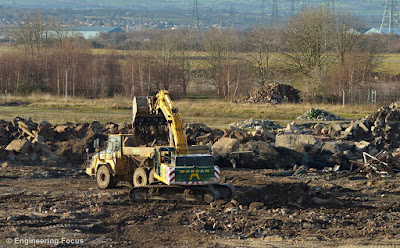First of all I should point out that the headline £70bn figure for transport investment between 2020 and 2050 covers both rail and road upgrades and is formed in part by money that it is already assumed will be invested in the North over the period. TfN assumes that £39-43bn will be invested in the North based on current levels of committed investment outlined in the Highways England Road Investment Strategy and Network Rail’s Control Period. This means a further £21-37bn will be required if TfN is to deliver the upgrades it says are needed to the road and rail network across the North. The £70bn figure is a huge sum of money, however it equates to only £2.3bn of investment each year over the next 30 years.
If current levels of committed investment are continued to 2050, £1.3bn to £1.4bn will be invested per year over the period. Therefore TfN are seeking a further £900m per year in order to achieve a full package of road and rail upgrades which would go far beyond that which Highways England and Network Rail have already proposed.
It is now up to Transport for the North to prove that there is a viable business case for the proposals that it is suggesting. The NRIL report forms a crucial part of proving the business case as TfN and NRIL need to demonstrate that there will be sufficient numbers of skilled workers in place in order to undertake such a large package of works in the North over 30 years. Without having the workforce in place and without investment in new technologies, schedules could slip and costs could spiral.
Over the past few years I have written at length about the challenges that face not just the North, but the UK as a whole. The Northwest Electrification Programme and GWML electrification, which both ended up over budged and years behind schedule demonstrate what can happen if there are not enough skilled workers in place to undertake the work that is being proposed.
Now that TfN and NRIL have identified the challenges and are now seeking to ensure that the industry trains enough new workers and invests in new innovative technologies, it may just be possible that the ambitious plan set out by TfN can be achieved
So let's take a look at what is being proposed....
Rail
Rail forms a key part of TfN's plan as infrastructure improvements in the right places can bring about transformational benefits to the entire region. Cutting journey times and increasing capacity on the railways would serve to encourage people to switch from road to rail and help to bring the north
together.
Electrification of the Pennine route between Manchester and Leeds has been talked about for years and was supposed to form part of Network Rails Control Period 5 (CP5) package of upgrades. However due in part to the issues raised above and in my previous blog, this hasn't happened and at one point it looked as if electrification had been scrapped all together
So far Network Rail has upgraded signalling and stations at key locations along the Calder Valley route. These upgrades should provide benefits to passengers when new trains finally begin to arrive in the North, starting from this year. I will be taking a look at the improvements that have already been completed in detail in a future blog.
Plans for what is now being called the Transpennine Route Upgrade (TRU) have been submitted to the Department for Transport for considerations, which it is hope will include electrification. The £3bn package of works aims to, in the words of Network Rail deliver “faster, longer, more frequent and more reliable services across the north of England, from Newcastle, Hull and York towards Manchester and Liverpool via Leeds”. Work is expected to begin in spring/summer 2019 and take up to 5 years to complete.
Transport for the North's own proposals which are much larger in scope are set to be submitted to the Government for review in 2020 and it is hoped that if approved work could start in 2024. The points below taken from the TfN's Strategic Transport Plan shows the scale of the ambition that TfN has. The building of new lines, stations and significant upgrades are proposed to take place between 2020/4 and 2050. Links are proposed to connect HS2 to a new Northern Powerhouse Rail which will provide connectivity from Liverpool to Hull.
- A new twin-track line linking Liverpool to HS2 and onwards to Manchester and other Northern cities, via Warrington and Manchester Airport
- Significant upgrades and integration with HS2 linking Leeds and Sheffield
- Significant upgrades between Sheffield, Leeds and Hull
- Significant upgrades of the Hope Valley corridor between Manchester and Sheffield
- Significant upgrades between Newcastle and Leeds
- Hub concepts for Northern Powerhouse Rail stations
Ultimately TfN suggest that “all passenger routes to be served by a minimum two trains per hour. Long distance services to achieve average journey speeds of at least 80mph. Inter-urban services to achieve average journey speeds of at least 60mph. Local and suburban services to achieve average journey speeds of at least 40mph. Rail to directly serve each of the North’s international airports. Infrastructure to be available to enable a weekday inter-peak level service on Sundays and public holidays. Major ports in the North to be served by a network that will support movement and future growth of rail freight. A 50% improvement in the average speed of freight services by 2028.”
It is hoped that a new line connecting Leeds and Manchester could deliver a Leeds to Manchester journey time of 40 minutes and a York to Manchester journey time of 62 minutes. As for capacity, TfN suggests six inter-urban services per hour should operate formed of eight carriages, and up to two local services per hour should operate, in both directions.
[Click to enlarge]
Map source: Trnasport for the North's final strategic transport plan 2019
- Junction on HS2 mainline for Leeds – North East services
- Junction on HS2 Leeds spur to facilitate through services via existing Leeds station
- Junction on HS2 mainline for Sheffield – Leeds services
- Junction at Manchester Piccadilly to support Northern Powerhouse Rail platforms
- Junction on HS2 Manchester spur for Manchester – Liverpool services
- South facing junction on HS2 mainline for London – Liverpool services
- Light Puplre - Upgrades
- Dark Purple - Transpennine Upgrade
- Light Green - Northern Powerhouse Rail new line
- Dark Green - Linking Liverpool to HS2
- Blue - HS2
Roads
Reading the report it doesn't seem as
if there is one grand proposal which will connect East with West,
however a number of individual schemes are being assessed. Proposals
range from grade separation of the A69/A68 and A69/A6079 junctions
through to building a new link road connecting the A534 west of
Congleton with the A536 to the north.
What is clear though is that road schemes are equally susceptible to cuts as they are for rail. For example schemes to improve the M62 and M53 have been in the words of the report “re-scoped”. Now to be honest I don't know what that means in the context of the report, but to me it sounds like kicked into the long grass?
Proposals to improve the the M56 between Altrincham and Manchester which were due to begin in 2019 have been delayed to 2020 (or after the completion of works taking place on the M62 between junctions 10-12), Highway's England states that the decision was “based on feedback from our customers and stakeholders of their experiences on our network“
Highway England has reassessed the SMART motorway upgrade as a whole and as a result the upgrade of the M6 between junctions 21a-26 has been deferred, with no new start date given. However the completion date for the upgrade of the M62 between junctions 10 and 12 remains unchanged as work is already underway and is due for completion in spring 2020. The start date for work between junctions 20 and 25 of the M62 also remains unchanged and will commence in Autumn 2019.
Proposals to dual the remaining sections of single carriageway on the full length of the A66 from the A1(M) to the M6 are still in the planning phase. However in the meantime major improvements should be made to two junctions on the A69 and should be completed by 2020
A study into the area which covers the M60, M62, M602, M61 and M66 has concluded that there is a strong case for the “substantial” upgrade to the M60 to improve journey times and East–West connectivity.
It looks like the proposal to construct a Trans-Pennine tunnel connecting Manchester and Sheffield have been thrown out, TfN states that “although a long tunnel under the Peak District National Park would be technically feasible, the cost would be prohibitive and offer poor value for money”. TfN is now working on an alternative which includes proposals for partially tunnelled route on the line of the existing A628 and enhancements to M60, M67, M1 and M18/A1.
I must admit to skimming over some of the 86 page report, but I got the feeling that while road enhancements form part of the proposed £70bn investment, the vision on how they can be improved in order to connect East and West was not as clearly defined as the vision for rail enhancements.
Hopefully over the coming 12 months we will begin to get a clearer picture of what Transport for the North is proposing and whether or not the Government will release the additional £21-37bn over 30 years that TfN is asking for.
My thoughts about SMART
To be honest I'm not sure if the postponement of SMART upgrades is a blessing or a curse, anecdotal evidence from regular commuters suggests that SMART just doesn't work. People complain of the hard shoulder not being used by motorist even when it is open to traffic and dangerous changes to speed restrictions between gantries (when working in combination with speed cameras).
My experiences of SMART is on the M6 heading into Birmingham and I did see cars sat in lanes 2, 3 and 4 driving below the speed limit when lanes 1 (hard shoulder open at the time), 2 and 3 were clear. Never mind middle lane hogging, witnessing lane 3 and 4 hogging while drivers were driving under speed limit and the carriageway ahead was clear, was a new one on me.
I have also experienced the speed limit changes, with gantries displaying speeds of 60mph, which would then drop at the next gantry to 40mph, with speed cameras in operation. This speed differential causes drivers to use the brakes, which has the potential to lead to the dreaded “phantom traffic jam”, which leads to congestion. Highways England say that gantry signals should be sufficiently visible that drivers have the time to slow down without braking, but I would dispute that statement. Reducing the speed of a car or indeed HGV by 20mph from the time of seeing the gantry sign to reaching the gantry and possible speed camera is difficult.
I do fully understand the principles
behind the SMART motorway, controlling the speed of traffic has been
shown to smooth the flow and opening the hard shoulder in effect
increases capacity without the need to widen the motorway. But
sometime what looks good on paper doesn't always translate to the
real world, not when you factor in driver behaviour (or misbehaviour).
Maybe it's a case of driver education, many people haven't even driven on a SMART motorway yet and would not be fully aware of the rules when they do enter a sections of SMART motorway. But I also believe better policing of lane hogging drivers is needed and that a more gradual decrease in speed between gantries could also help.
The TfN report can be found here: https://transportforthenorth.com/wp-content/uploads/TfN-final-strategic-transport-plan-2019.pdf
For more information
e-mail info@EngineeringBlog.co.uk













